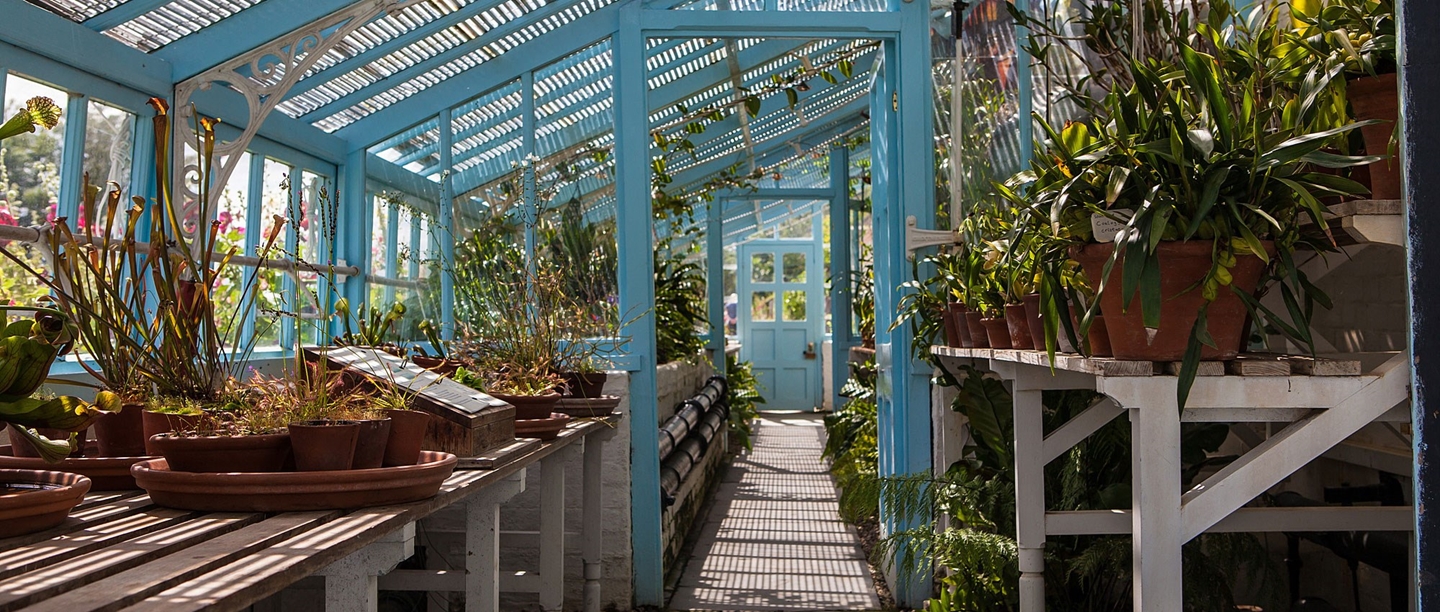Darwin and the Movement of Plants
During the Victorian era it was generally believed that one of the chief differences between plants and animals is that plants don’t move. Charles Darwin conducted many painstaking experiments to support his theory to the contrary. He demonstrated, through endless observations, that plant movements are just so slow that they are almost invisible to the human eye.
Darwin was fascinated by the gradual bending of the tentacles of Drosera rotundifolia, in particular, and by the revolving movements of tendrils of climbing plants. He was the first to document phototropism (the movement of a plant towards light) of oat seedlings, and though his observations confirmed the insectivorous nature of Drosera.
In his last plant book, The Power of Movement in Plants, published in 1881, Darwin set out to determine whether all kinds of plant movement are related and are mere modifications of one basic movement: circumnutation (the circular movement of a growing plant organ). From his family home, Down House, Darwin studied many plant organs such as young growing roots, emerging shoots, leaves and their stalks, flower peduncles.
Recreating Darwin’s Work
At English Heritage we are always seeking ways to communicate Darwin’s experiments to our visitors, and bring his world to life. In July 2016, in collaboration with Icon Films, we recreated one of his studies into the movement of young growing leaves in response to light.
Out of the species listed in Dawrin’s book The Power of Movement in Plants we selected a well-known Pelargonium zonale. To prepare for the experiment, the team obtained all the materials listed in Darwin’s method and followed his step-by-step instructions.
Cameras and time-lapse recording were then set up, enabling the team to study the same type of plant as Darwin, and compare their results with those he arrived at himself.
The Method
A very light glass needle, half an inch long, was attached to the blade of a young leaf with evaporated thickened shellac. The end of the needle was then dipped into melted black wax, creating a little bead, which would then be traced during the experiment.
The plant was then placed in the centre of the set-up and a white card with a marked black dot was placed behind it, as a reference point. Finally, a sheet of clear glass was positioned in front of the plant as a surface on which the movement would be marked.
The experiment was carried out for 24 hours and every hour a dot was marked on the glass sheet, representing the position of the black bead in relation to the reference point. Simultaneously, the time-lapse camera was busy taking photographs every 2 minutes to capture any slight movement.
The Results
When the experiment was finished, the results were extraordinary. Not only had the leaf moved over the course of the 24-hour period (to the great relief of the Down House team), but the drawing plotted showed clear circumnutation – (the gyrating movements of the plant stems as they grow upwards. When the recorded results were placed next to Darwin’s original findings, the team were able to see dramatic similarities.
